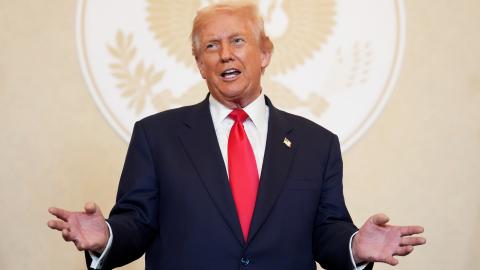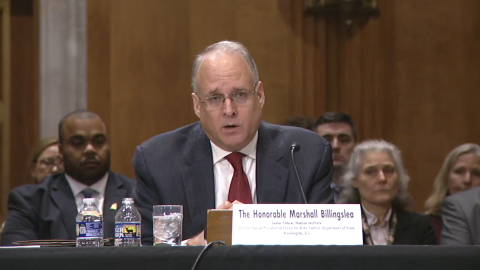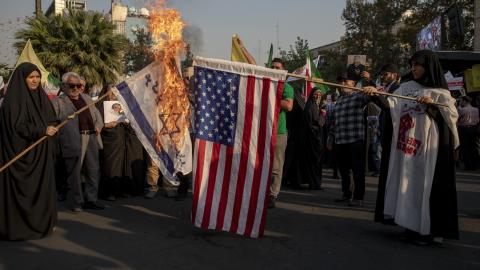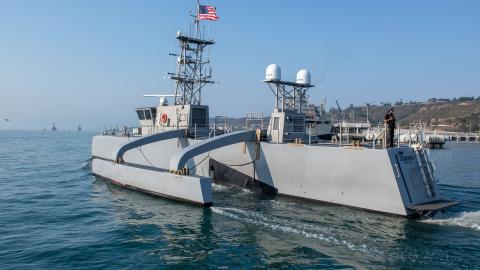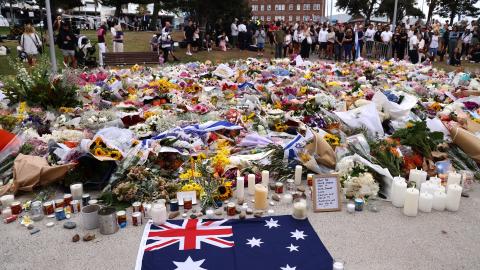Executive Summary
As the Chinese Communist Party (CCP) strengthens its regime and pursues global dominance, it faces significant and complex structural challenges. Domestically, Chinese economic growth is declining drastically under misguided policies while an aging population and declining birth rates affect the country’s labor supply, consumption, and social security system. The housing market is in crisis as millions of apartments remain unsold and real estate developers go bankrupt, and high youth unemployment creates further instability. Political corruption in the CCP, bureaucratic inefficiency, and other waste also hinder economic progress and public trust.
Internationally, trade tensions with the United States and other Western nations threaten exports and foreign direct investment. And Beijing’s coercive policies complicate relations with the Global South, where countries often owe debt to China. Diplomats and other officials at international organizations are increasingly skeptical of the China’s global influence, making foreign policy more difficult.
While the People’s Republic of China (PRC) has weathered crises before, a sudden regime collapse in China is not entirely unthinkable. Policymakers need to consider what might happen and what steps they would have to take if the world’s longest-ruling Communist dictatorship and second-largest economy collapses due to its domestic and international troubles.
With chapters written by experts in military affairs, intelligence, economics, human rights, transitional justice, and constitutional governance, this report examines the initial steps that should be taken in the immediate aftermath of the CCP regime’s collapse and the long-term trajectory China might take after a stabilization period. Drawing on historical analysis, strategic foresight, and domain-specific expertise, this anthology describes these challenges as an exercise in possibilities. The different chapters explore how a single-party system collapses in key sectors of the country and how political institutions transform, as well as China’s unique political, economic, and social situation. Taken together, they assess the daunting tasks of stabilizing a long-repressed country after it has collapsed, in addition to the forces shaping China’s future. In so doing, the authors hope to offer policy recommendations for managing the risks and opportunities of a transition.
The chapter “OSS in China Again: The Role of US Special Operations Forces after CCP Collapse,” written by an author outside Hudson Institute, describes US operations in China during World War II and suggests that US special operations forces (SOF) can help stabilize a post-CCP China. It envisions SOF aiding provisional authorities, protecting critical infrastructure, and facilitating the peaceful emergence of a new government while working “by, with, and through” local actors. The chapter also underscores the cultural importance of narratives, historical memory, and symbolic legitimacy in a post-Communist transition.
In the second chapter, “Targeting Bioweapons Facilities with Precision after a CCP Regime Collapse,” Ryan Clarke assesses the CCP’s bioweapons infrastructure and warns that the People’s Liberation Army’s (PLA) dual-use biological research poses a strategic threat. He outlines three options for neutralizing bioweapons labs, with an emphasis on simultaneous operations, control of facility perimeters, and safe extraction or destruction of hazardous materials. The chapter argues for completely disabling the programs to prevent proliferation and catastrophe.
Clarke then advocates for overhauling the Chinese economy by recapitalizing the country while a new government repudiates illegitimate debts, privatizes state assets, and implements decentralization in “Restructuring the Chinese Financial System after CCP Collapse.” He emphasizes that CCP policies have constrained China’s economic potential and argues that a liberalized financial architecture is essential for both domestic prosperity and integration with global markets.
In the chapter “Securing China’s Assets in America,” Gordon G. Chang advises Washington to “get American businesses and citizens out of China” and to remove PRC entities from important sectors of the US economy. It highlights vulnerabilities of engaging with Beijing and describes what America should do with PRC assets in the US.
Rick Fisher in “Securing and Restructuring the PLA, PAP, and People’s Militia” outlines a post-CCP demobilization and professionalization plan for China’s vast security apparatus. It recommends retaining a leaner, more accountable military force focused on national defense and disaster relief while disbanding units associated with political repression. A Chinese military force without hegemonic ambitions can then help a new government integrate into peacekeeping operations and space exploration partnerships.
The chapter “Spy Versus Spy Versus Spies: The CCP’s Security and Espionage Apparatus in the Absence of Central Authority” explores the potential fragmentation of the Ministry of State Security (MSS) and local Public Security Bureaus (PSBs). It draws lessons from European political transitions, particularly in dismantling secret police networks and opening archives for public scrutiny.
In “China’s Autonomous Regions and Human Rights,” Nina Shea discusses the importance of protecting human rights during a transitional period. According to her, the US should intervene to prevent ethnic violence, civil wars, and political retribution, with a special focus on China’s five autonomous regions— Guangxi, Xinjiang, Tibet, Inner Mongolia, and Ningxia. She also highlights the need for measures to alleviate the grievances of other groups, including religious minorities like Christians and the Falun Gong.
The author of “How to Initiate a Truth and Reconciliation Process in China” describes how China can only move beyond past evils through the investigation and public disclosure of those crimes. The chapter recommends establishing a national truth and reconciliation commission modeled after South Africa’s, and argues that peacefully transitioning to democracy will be difficult without forgiveness and reconciliation.
The final chapter, “A Constitutional Convention Plan,” focuses on how a post-Communist China can establish a constitutional democracy and draft a new constitution. It addresses how a constitutional convention would work, whether the boundaries of certain regions should be redrawn, how China’s relationship with Taiwan should change, and what the new country’s name should be.
